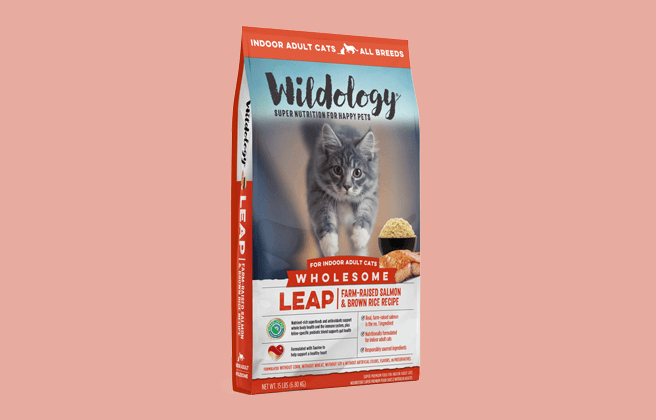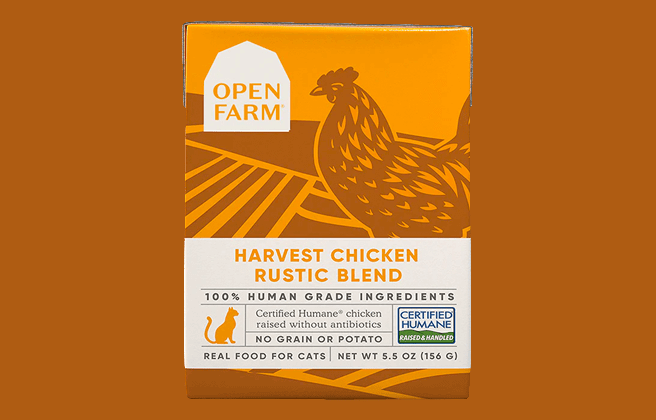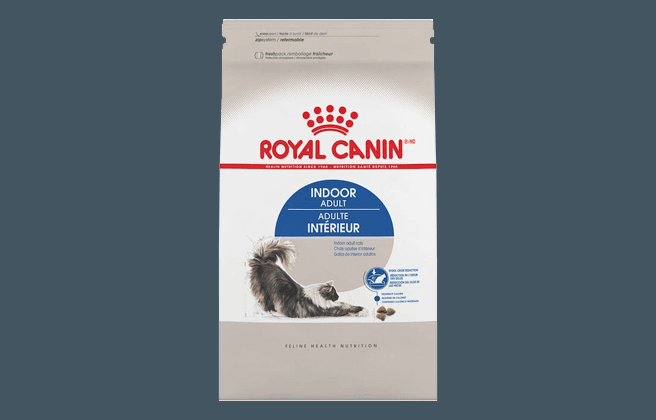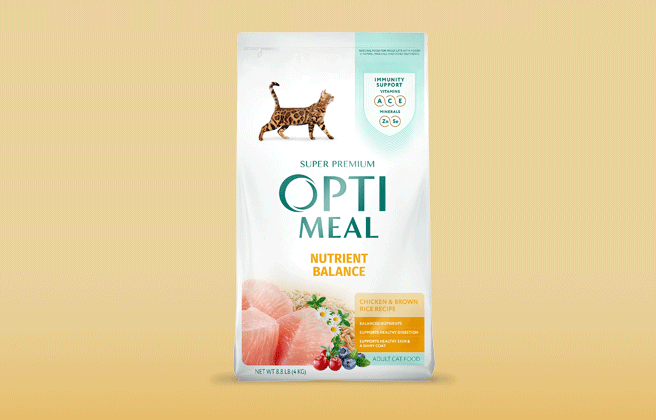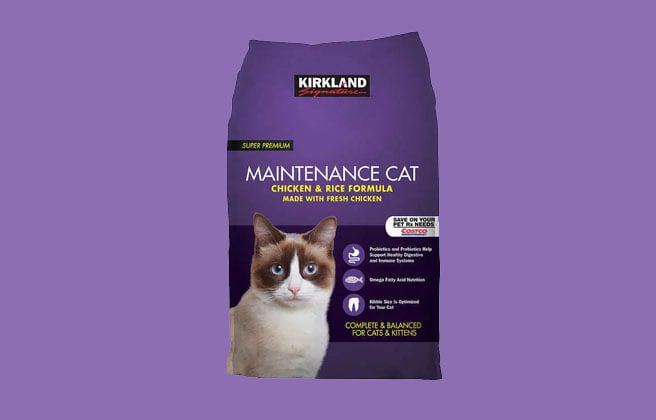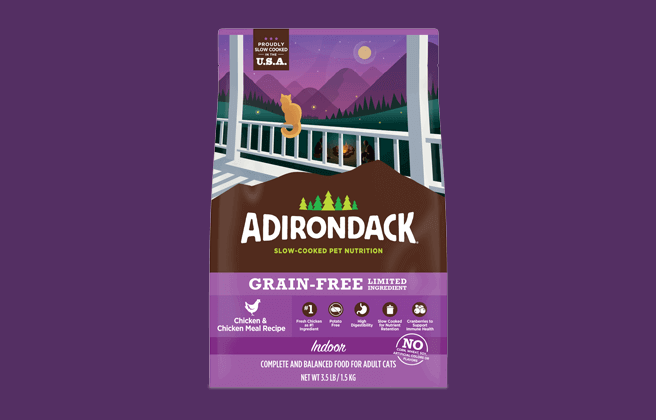
Our Verdict
Adirondack dry product range is made of two recipes which all receive the Cat Food Advisor rating, 4.5 stars.
This dry product range has meat or fish as its first ingredient and is mixed with a blend of probiotics, vitamins and fatty acids for optimal nutrition and health.
Pros
- Grain-free
- Contains probiotics
- Contains taurine
- Omega-3 fatty acids
Cons
- Above average carbs
- Low moisture
The table below shows each recipe in this range including our rating and the AAFCO nutrient profile: Growth (kitten), Maintenance (adult), All Life Stages, Supplemental or Unspecified.
| Product line | Rating | AAFCO |
|---|---|---|
| Adirondack Indoor Chicken & Chicken Meal | 4.5 | M |
| Adirondack Indoor Whitefish & Lentils | 4.5 | M |
Save up to 35%
with Autoship
See discount in cart
Recipe and Label Analysis
Adirondack Indoor Chicken & Chicken Meal was selected to represent the other products in the line for a detailed recipe and nutrient analysis.
Label and nutrient data below are calculated using dry matter basis.
Adirondack Indoor Chicken & Chicken Meal
Estimated Dry Matter Nutrient Content
Protein
Fat
CarbsCarbohydrates
Deboned chicken, chicken meal, peas, lentils, fava beans, tapioca starch, whitefish meal, chickpeas, chicken fat (preserved with mixed tocopherols), flaxseed, natural flavor, pea protein, dried alfalfa meal, menhaden fish oil (preserved with mixed tocopherols), DL- methionine, monosodium phosphate, choline chloride, L-lysine, salt, dried cranberries, dried blueberries, taurine, fructooligiosaccharide (fos), L-ascorbyl-2-polyphosphate, vitamin D3 supplement, yucca schidigera extract, calcium carbonate, vitamin E supplement, mixed tocopherols, niacin supplement, dried seaweed meal, D-calcium pantothenate, riboflavin supplement, vitamin B12 supplement, thiamine mononitrate, vitamin A acetate, pyridoxine hydrochloride, citric acid, biotin, folic acid, potassium chloride, ferrous sulfate, zinc sulfate, zinc proteinate, iron proteinate, copper sulfate, zinc oxide, manganese sulfate, manganese proteinate, copper proteinate, manganous oxide, calcium iodate, sodium selenite, dried lactobacillus casei fermentation product, dried lactobacillus acidophilus fermentation product, dried bifidobacterium animalis fermentation product, dried lactobacillus reuteri fermentation product
Fiber (estimated dry matter content) = 3.5%
Red denotes any controversial items
Ingredients Analysis
The first ingredient is chicken. Chicken is considered “the clean combination of flesh and skin… derived from the parts or whole carcasses of chicken”. 1
Chicken is naturally rich in the 11 essential amino acids required by a cat to sustain life.
The second ingredient is chicken meal. Chicken meal is considered a meat concentrate and contains nearly 300% more protein than fresh chicken.
The third ingredient is peas. Peas are a quality source of carbohydrates. And like all legumes, they’re rich in natural fiber. However, peas contain about 25% protein, a factor that must be considered when judging the meat content of this cat food.
The fourth ingredient is lentils. Lentils are a quality source of carbohydrates. Plus (like all legumes) they’re rich in natural fiber. However, lentils contain about 25% protein, a factor that must be considered when judging the actual meat content of this cat food.
The fifth ingredient is fava beans, legumes naturally high in dietary fiber and other healthy nutrients. However, beans contain about 25% protein, a factor that must be considered when judging the meat content of this cat food.
The sixth ingredient is tapioca starch, a gluten-free, starchy carbohydrate extract made from the root of the cassava plant.
The seventh ingredient is whitefish meal. Because it is considered a meat concentrate, fish meal contains almost 300% more protein than fresh fish itself.
Fish meal is typically obtained from the “clean, dried, ground tissue of undecomposed whole fish and fish cuttings” of commercial fish operations.2
Unfortunately, this particular item is anonymous. Because various fish contain different types of fats, we would have preferred to have known the source species.
The eighth ingredient is chickpeas, also known as garbanzo beans. Like peas, beans and lentils, chickpeas are a nutritious member of the fiber-rich legume (or pulse) family of vegetables. However, chickpeas contain about 22% protein, a factor that must be considered when judging the actual meat content of this cat food.
From here the list goes on to include a number of other items. But to be realistic, ingredients located this far down the list (other than nutritional supplements) are not likely to affect the overall rating of the product.
However, this recipe includes menhaden oil. Menhaden are small ocean fish related to herring. Their oil is naturally rich in the prized EPA and DHA type of omega-3 fatty acids, two high quality fats boasting the highest bio-availability to both dogs and humans.
What’s more, in their mid-depth habitat, menhaden are not as likely to be exposed to mercury contamination as is typical with deep water species.
In addition, we note the inclusion of dried fermentation products in this recipe. Fermentation products are typically added as probiotics to aid with digestion.
We view the presence of taurine in this recipe as a positive addition, an essential amino acid for cats associated with the healthy function of heart muscle and eye sight, and is crucial for maintaining good health in cats.
This recipe receives a 4.5–star rating.
Save up to 35%
with Autoship
See discount in cart
Nutrient Analysis
Based on its ingredients alone, Adirondack Indoor Chicken & Chicken Meal looks like an above-average dry product.
The dashboard displays a dry matter protein reading of 35.6%, a fat level of 18.3% and an estimated carbohydrate level of 43.1%, alongside a fat-to-protein ratio of 38%.
As a group, the brand features an average protein content of 35.5% and a mean fat level of 13.3%. Together these figures suggest a carbohydrate content of 43.1% for the overall product line, alongside a fat-to-protein ratio of 38%.
This means the Adirondack dry product line contains near-average protein, above-average carbs and near-average fat when compared to typical dry cat food.
Final Word
Adirondack’s dry cat food is made from the highest quality ingredients. The slow-cooking process has been developed over 40 years to retain the ingredient’s flavor and ensure optimal nutrient absorption and high digestibility. Whether your cat is roaming the house or has an adventurous nature outside.
Has Adirondack cat food been recalled in the past?
No, there have been no recorded recalls for Adirondack.
You can view a complete list of all cat food recalls since 2021 here.
To stay on top of any cat food product recalls, sign up for our free email alerts, here.
About
The Golladay family started making pet food in a small feed mill in Rogers, Ohio, more than 40 years ago.
They formulated a slow cooking method which created a higher starch conversion that led to increased stamina and energy in cats.
The business is still operated by the family but it is now manufactured from a facility in Lisbon, Ohio.
Best cat foods
We uphold the highest editorial standards when creating the authoritative content pet parents rely on and trust.
Every piece of clinical content on the Cat Food Advisor is reviewed by our certified Veterinary Advisory Board, which consists of licensed veterinarians and medically certified specialists.
Our reviews are completely independent; we are not paid by any pet food company to promote their products favorably. We do not accept money, gifts, samples or other incentives in exchange for special consideration. For more information see our Disclaimer & Disclosure page.






